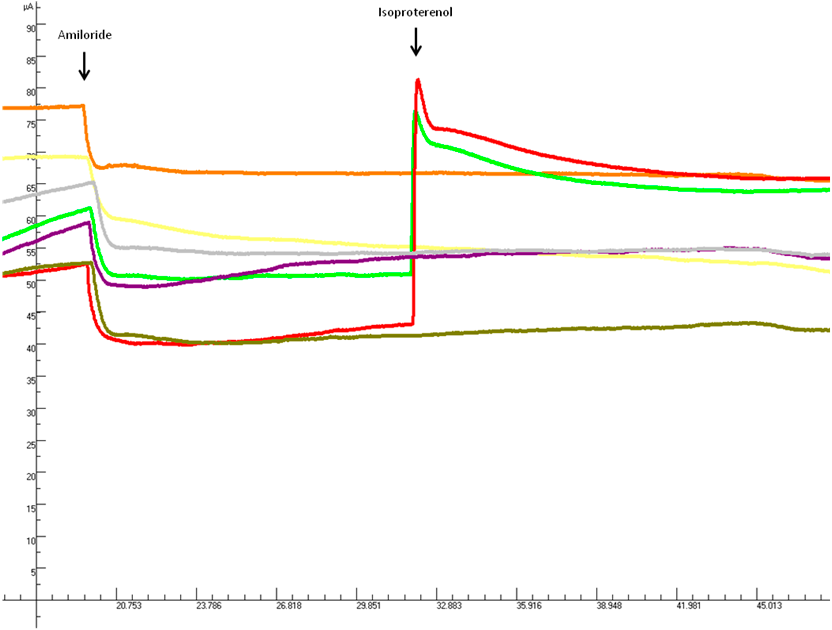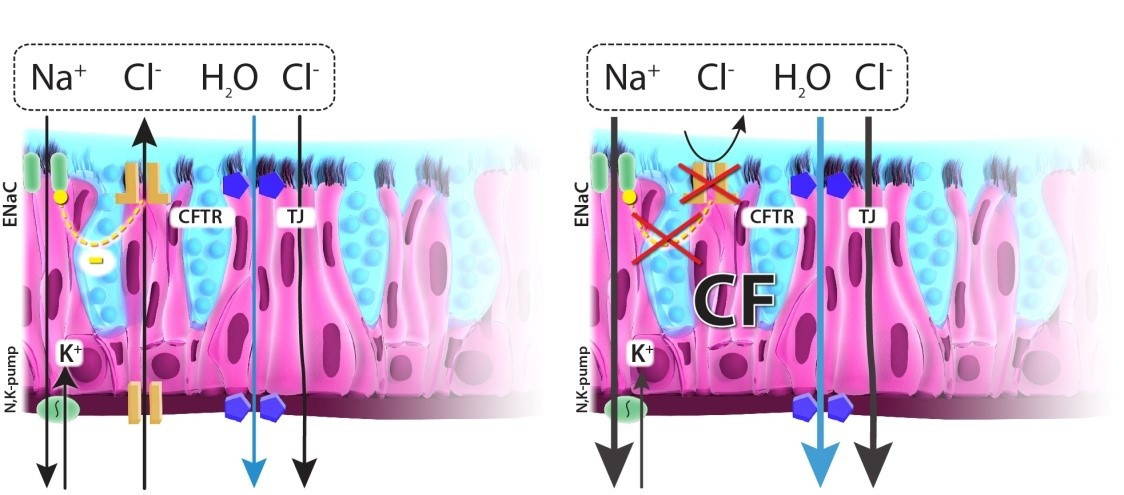The epithelial sodium channel (ENaC) is a membrane-bound ion-channel that is permeable to Li+-ions, protons, and especially Na+-ions. It is a constitutively active ion-channel, sensitive to Amiloride. ENaC is located in the apical membrane of polarized epithelial cells such as airway epithelium, which is essential for optimizing ASL volume and for effective muco-ciliary clearance of the lung. In cystic fibrosis, the absence of these CFTR functions is predicted to result in increased Na+ and water (volume) absorption, depletion of ASL volume, impaired mechanical clearance of mucus, and infection. One possible strategy for treating cystic fibrosis is to block the ENaC activity. MucilAir™ and MucilAir™-CF could be used for testing the drugs effect on ENaC activity.



